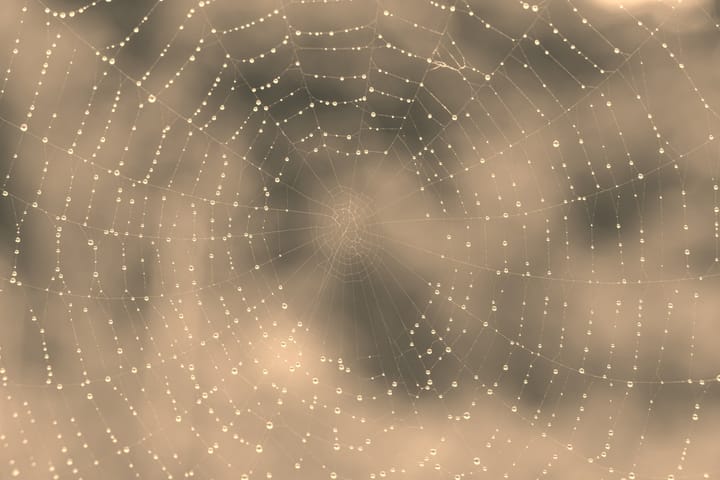How Indian weaving was destroyed?
Prepare to dive into a world of forbidden fabrics, industrial espionage, and a textile revolution on the brink, as we journey to the heart of the luxurious Indian fabric Chintz has ignited a global fashion revolution.

Thus far, we've seen the complex production process, how the demand for Chintz influenced trade, and how a French priest stole the secret production process in 1742 and even it's use banned in several countries in Europe.
The legislation intended to protect European textile producers from Indian calicoes ironically ended up stimulating the growth of calico printing industries in Holland and Switzerland, which were able to thrive by focusing on export markets. These countries became major centers of calico production in Europe.
The Fabrique-Neuve in Neuchâtel produced over 160,000 pieces, more than three times the output of other major centres like Mulhouse, Barcelona, Manchester, or Prague; And employed over 600 workers at this time, demonstrating the scale of the calico printing industry in Switzerland.
Eventually by the time the ban was lifted in 1759 even the French and English mills were able to produce Chintz on their own.
Europeans at first produced reproductions of Indian designs, and later added original patterns. A well-known make was toile de Jouy, which was manufactured in Jouy, France, between 1700 and 1843.
On the back of this success, the Lancashire textile mills became the very engine driving the English industrial revolution. The Lancashire textile boom could never have taken hold without the protection of high tariff walls against the world’s great textile workshop in India. Indian handweavers, whose quality was high and wages low, had been the centre of world production for centuries. But the British protectionism, in combination with the extension of imperial power through the East India Company, completely changed the rules of the game - especially for Bharat.
The British policy transformed India from an exporter of textiles to a supplier of raw cotton for Lancashire factories. Their tactics were brutal. They included smashing the hands and cutting off the thumbs of Indian weavers while implementing a system of usurious taxes favouring cotton production – sometimes provoking famine in the process.

The cheap European Chintz lacked the lustre and finish of the original and gradually fell out of favour.
The death knell came from a 1996 ad campaign by IKEA that encouraged British housewives to throw away their fussy furnishings. At the time IKEA was struggling to sell its cheap, modern furniture in the UK, where consumers still preferred their chintz.
To succeed in the UK, Designer Naresh Ramchandani felt that IKEA had to "convert the UK's sense of what homely is. To get the Ikea style adopted, they had to put it right at the centre of British taste, and push out the old version of British taste."
Ramchandani pitched his preposterous idea to IKEA. In his own words, Ramchandani says "It was a proper piece of propaganda; total propaganda. Our strategy was to change British taste over the next five years."This was born the popular"Chuck out your chintz" campaign.
Barely 3 decades later, the propaganda has been widely successful and the results are here for us all to see. IKEA has turned our world into bland blacks whites and shades of grey that lack any colour, patterns, textures or variety, let alone the actual production skills we saw at the beginning.
We continue to find the echoes of the Chintz revolution to this day, with fashion houses such as #Mulberry and #Gucci drawing abundant inspiration from these colourful designs in their 2018 autumn collections."

The systematic destruction of the #indianhandlooms industry by the British is cruel, to say the least. However, India still is home to some of the finest #craftspeople in the world. Find them, and support them by buying #handmade #indian goods more often.
These are our stories in our voices. Let’s Own it...Wear it - Be unapologetic.
This is the final article of a four-part series.
First article: Which Indian fabric once sparked a revolution in trade and fashion?
Second article: How did Chintz influence trade and revolutionise fashion?
Third article: How the French stole the secret of making 'heathen' fabric?
Reference materials for the information in this series:
- Riello, G. (n.d.). The Rise of Calico Printing in Europe and the Influence of Asia in the Seventeenth and Eighteenth Centuries. https://www.lse.ac.uk/Economic-History/Assets/Documents/Research/GEHN/GEHNConferences/conf8/PUNERiello.pdf
- Bekhrad, J., n.d. The Floral Fabric That Was Banned. [online] Bbc.com. Available at: https://www.bbc.com/culture/article/20200420-the-cutesy-fabric-that-was-banned
- En.wikipedia.org. n.d. Chintz. [online] Available at: https://en.wikipedia.org/wiki/Chintz
- Fee, S., n.d. THE CLOTH THAT CHANGED THE WORLD: India’S Painted And Printed Cottons. [online] Rom.on.ca. Available at: https://www.rom.on.ca/sites/default/files/imce/pdf/chintz_audioguide_transcript.pdf
- Instagram. n.d. About Chintz. [online] Available at: https://www.instagram.com/p/B7AOhSsJ8Xu
- Yafa, S., 2014. Cotton. New York: Penguin Books.
- Zanten, V., 2020. Chintz 101: A Primer For The Print That’S Back In A Big Way. [online] Vogue. Available at: <https://www.vogue.com/article/chintz-prints-to-know>
- New Internationalist. n.d. Cotton - A History. [online] Available at <https://newint.org/features/2007/04/01/history>
- The Inside Blog. n.d. A Brief History Of Chintz - The Inside Blog. [online] Available at: https://www.theinside.com/blog/a-brief-history-of-chintz/
- Shahani, G. (2008). “A Foreigner by Birth”: The Life of Indian Cloth in the Early Modern English Marketplace. In: Sebek, B., Deng, S. (eds) Global Traffic. Early Modern Cultural Studies. Palgrave Macmillan, New York. https://doi.org/10.1057/9780230611818_10
- The Heritage Lab. n.d. How Indian printed and painted cotton textiles (chintz) changed the world!. [online] Available at: https://www.theheritagelab.in/indian-textile-chintz/




Comments ()